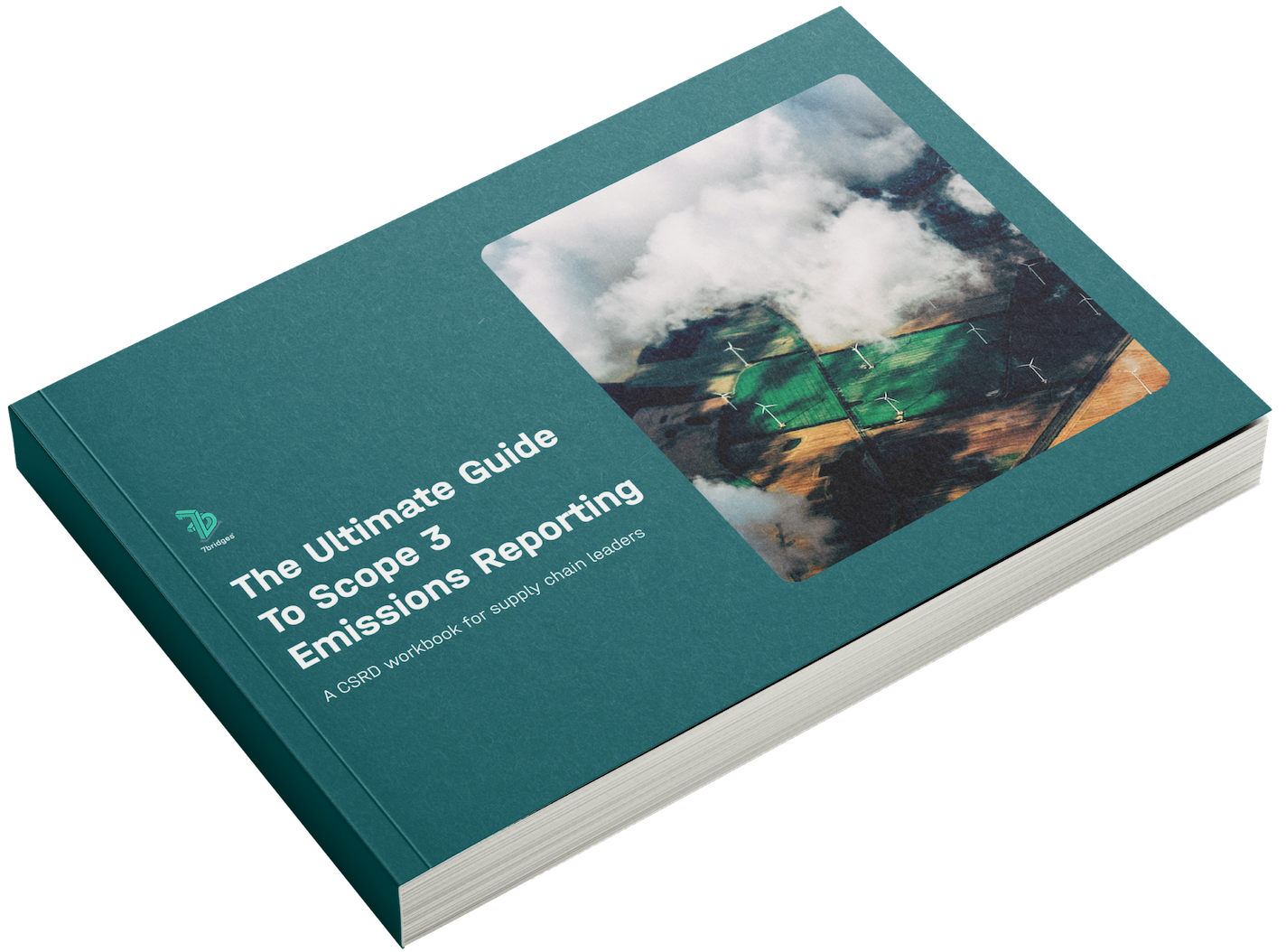Discover our platform
Learn more about the 7bridges AI powered supply chain management solution, and how it can transform your business for a competitive advantage.
A guide to help you understand how to measure and report on your scope 3 emissions, enabling you to comply with incoming regulations and make a competitive edge out of your logistics.

If you’ve been keeping an eye on regulatory news, you’ve probably heard about the new Corporate Sustainability Reporting Directive (CSRD).
It’s going to expand the number of companies that have to report on green metrics by almost 40,000 businesses. These businesses will have to do extensive reporting, including on their Scope 3 emissions.
Implementing CSRD will mean nearly 40,000 additional companies in the EU will need to start reporting on their sustainability metrics over the coming years.
Although this will be a phased rollout, the first set of companies will need to start reporting on their 2024 data. That means this year is crucial for putting measurement tools in place.
The new CSRD guidelines will include everything that came with NFRD, but will also include double materiality, greater social reporting and information in line with the Sustainable Finance Disclosure Regulation.
Determine your emissions metrics.
Use a recognised framework to make sure your data is accurate and verifiable.
Choose your measurement tools.
Most businesses don’t have everything they need in-house to measure Scope 3 emissions, so you’ll need to bring in third-party tools or software.
Establish your baseline.
Align your tools to your metrics and get your initial readings. This baseline figure tells you where you are starting from.
Create an action plan.
Use your baseline data to decide your next steps. This is where decision-making tools like AI can help.
Learn more about the 7bridges AI powered supply chain management solution, and how it can transform your business for a competitive advantage.